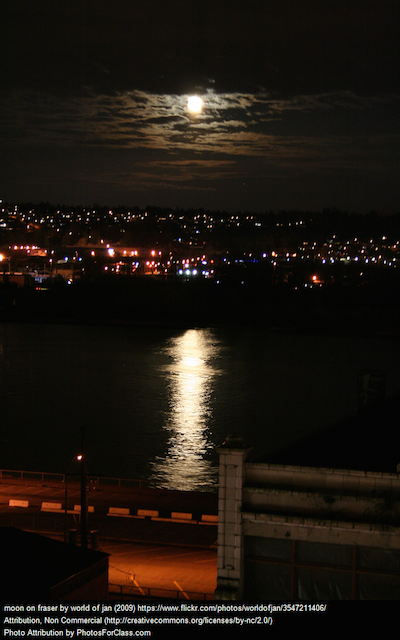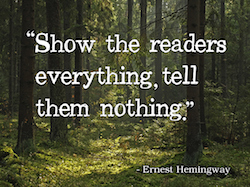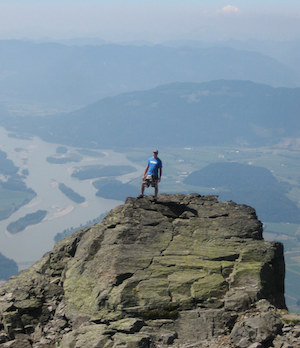4.1 Read About
4.1C Free Verse & Show Don't Tell - A Creativity Lesson
 Don’t tell me the moon is shining; show me the glint of light on broken glass.
Don’t tell me the moon is shining; show me the glint of light on broken glass.
– Anton Chekhov
(Source: Goodreads)
What is meant by "Show, Don't Tell"?
You can tell your readers that:
The moon was shining,
or you can show that:
Glimmers of moonlight, as bright as diamond-flame, turned the lightly flowing river a-glow as it sighed an eerie lullaby.
You can tell your readers:
The city lights were glowing under the moonlit sky,
or you can show that:
The flickering lights in the distance lit up the night like a thousand fireflies sending their greetings to their pale white sky friend who was peeking out behind veils of clouds.

Good writers “show”, rather than “tell”, using imagery. When you show, you are being an artist, painting with words! A splash of colour and a dash of sound can be used to create powerful images.
Imagery is an important literary device that goes hand in hand with descriptive writing. Imagery is a vivid description that involves using the five senses and making careful word choices to show, not tell. You use your senses to create an image in the reader’s mind.
Your five senses are:
| Sight | Hearing | Touch | Taste | Smell |
Why Use Imagery?
- to generate a vibrant and graphic presentation of a scene that appeals to as many of the reader’s senses as possible.
 Which do you like better?
Which do you like better?
- Telling sentence: Mt. Cheam stands high above the Fraser River.
- Showing sentence: The wind whispers as it whirls around the majestic pyramid that is Mt. Cheam; the peak looms menacingly over the Fraser River that is casually winding its way to freedom through the grass-filled valley below.

- Telling sentence: I biked around the beautiful Stanley Park seawall.
- Showing sentence: Up and down, my legs pedaled me reluctantly forward on the seemingly endless seawall trail while my eyes sought out the fairyland trees and my ears absorbed the gentle lapping of waves as the ocean hummed its peaceful tune through the salty air.
What is the secret to "showing" a scene? Use imagery to create a picture.
- Specific details.
- Sensory details - sights, hearing, touch, or even taste or smells.
- Strong action verbs. (looms, winding, pedaled, sought, absorbed, lapping, hummed)
- Creatively applied adverbs. (menacingly, casually, reluctantly, seemingly )
- Interesting nouns.
- Tantalizing adjectives! (majestic, grass-filled, endless, fairyland, gentle, peaceful, salty)
These details project the reader into the scene to become a part of it. They can be used for "real objects" (such as a place) or abstract concepts, such as "creative thinking".
Have you ever been to an ocean beach in BC? A fishing village? The village of Tofino, BC? It is on the west side of Vancouver Island on the Pacific Ocean, where amazing surf, beaches, Orcas, and natural beauty draw tourists from all over the world, including surfers. I wonder what it would be like to live there? The first poem in today's lesson describes Tofino.
First Read: Click on the title to read the poem, Tofino, once, to get the gist of how it uses imagery.
Then, listen to the poem about Tofino, BC as you read along. Notice how the punctuation, not the lines, guides the reading.
Does the poem rhyme?
When a poem doesn’t rhyme, it is called a free verse poem.
Does the poem have stanzas?
- Free verse poems may be written in stanzas, but not always. The poem, Tofino, has no stanzas.
So what about the structure?
- In Tofino, the lines are part of the structure. Some free verse poems have stanzas that are part of the structure.
 |
Complete the responses in your Learning Guide. |